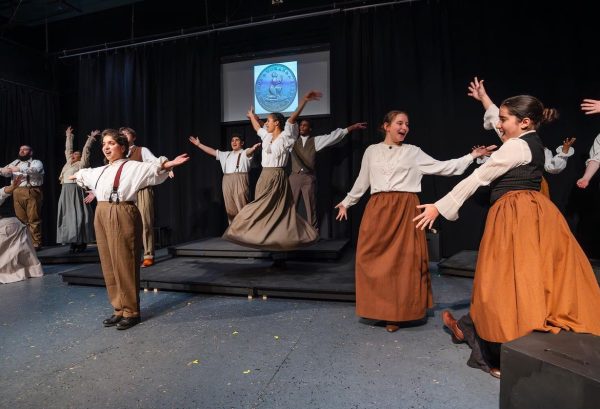Limón Dance Company Performance: A Review
October 27, 2022
On Friday, October 21, I had the honor to see the Limón Dance Company perform at The Egg in Albany. The Limón Dance Company was started by José Limón (1908-1972) in 1946 under the artistic direction of Doris Humphery (1895-1958). The company performed pieces that were choreographed between fifty and one hundred years ago, and it was amazing to watch these performances unfold on a live stage.
The first piece was titled “Air for the G String” and was actually choreographed by Doris Humphery, the woman who taught José Limón. Originally choreographed in 1928, this piece had five dancers in it. The dancing and movement overall was very simple; however, this simplicity was balanced well by the beautiful and magnificent costumes. They were blue and golden yellow and had multiple feet of fabric trailing behind them, which were used to make moving art.
The second piece was titled “Orfeo” based on the famous Greek myth of Orpheus and Eurydice. It was choreographed in 1971 after the death of Limón’s wife. It was mainly a duet, with three characters that came in and out that I understood to be the fates. The piece expertly utilized props in a way that did not distract from the quality in the movement, but also added to its meaning. There was a very clear sense of gravity in the piece through the opposition of the suspension held. There is an entire section of the piece where, to mimic the trials and tribulations represented in the original myth, the dancers who played Orpheus and Eurydice did not look at each other. When they finally do, the entire mood of the dance shifts, as both the dancers and the audience know that they can no longer be together. The whole piece is a great presentation of grief and loss.
The third piece was titled “Chaconne”, after the name of the Bach piece used as the music. This was a solo that overflowed with confidence and mastery. In my opinion, this piece was the most “Limón” as any of the pieces could get. The dancer had incredible control and inherent strength, while also conveying apparent softness and effortlessness. The regal holding of the body further portrayed the capability of the dancer. There was a simplicity in “Chaconne” with the lighting and costume that further emphasized the mastery and excellency of the soloist.
The fourth and final piece they performed was “Waldstein”, the unfinished and final work that José Limón worked on before his death in 1972. The piece was finished by Dr. Daniel Lewis and performed for the very first time this season. There were eight dancers in this work, and the music used was by Beethoven. The joy in not only the dancers’ faces but also in their bodies read very well to the audience, but there was a lot of depth to the piece emotionally; not every moment of the dance was happy, and it only amplified the happy moments even more. There was a very clear sense of gravity in the piece through the opposition of the suspension held.
Overall, the entire performance was wonderful. Unlike painted or drawn art, dance cannot be put into a museum in the way it is meant to be presented: performed live. The importance of a company to continue to perform pieces choreographed so many years ago, like the Limón Dance Company, is innumerable.








